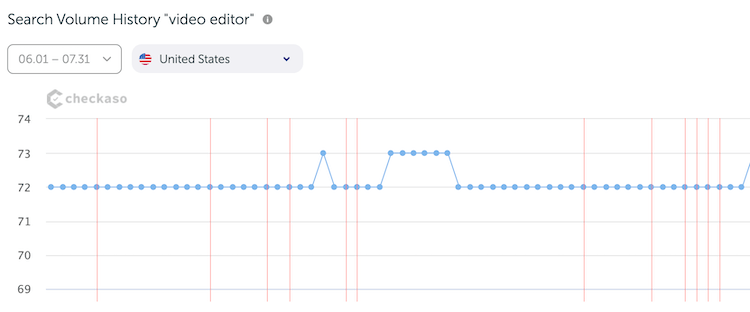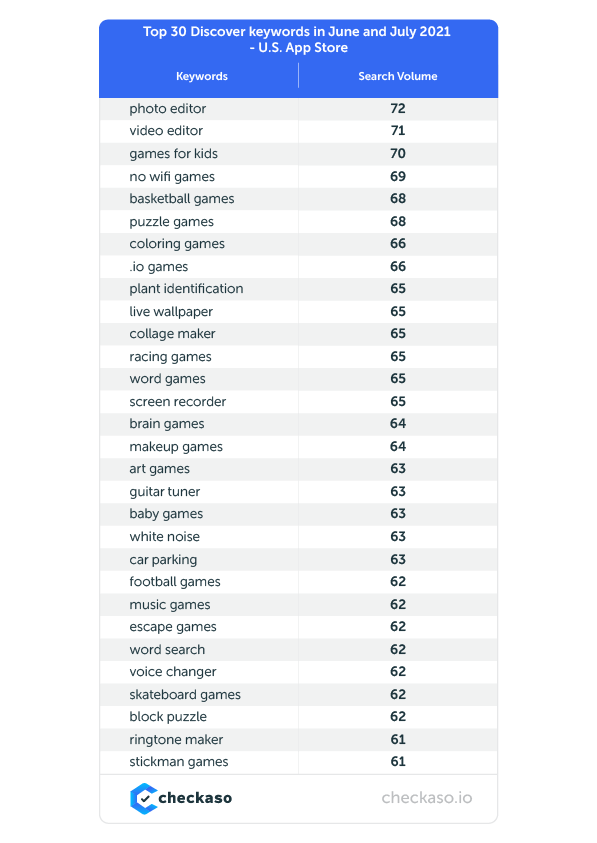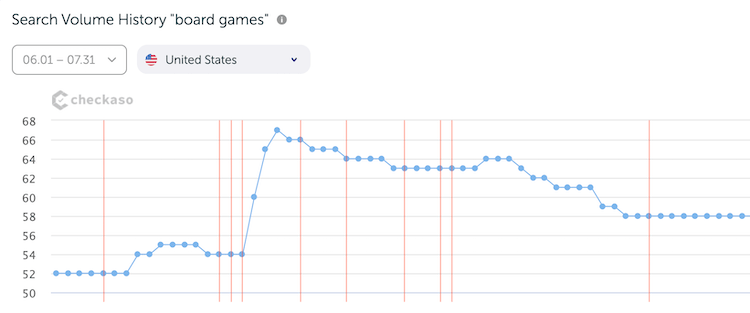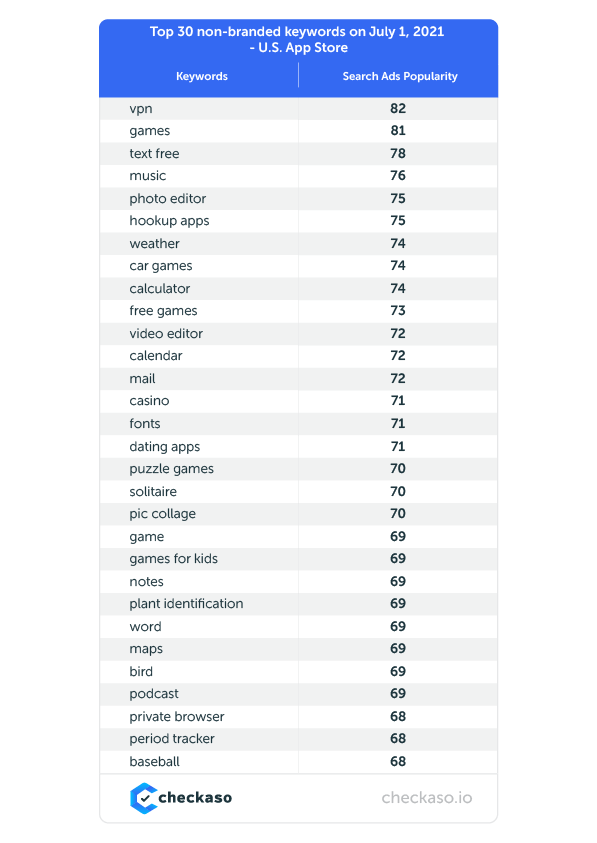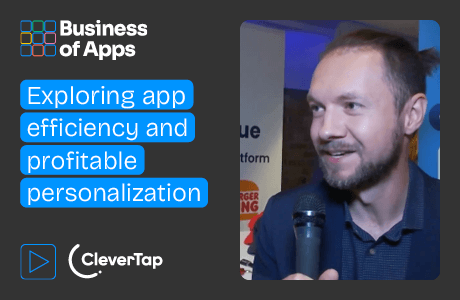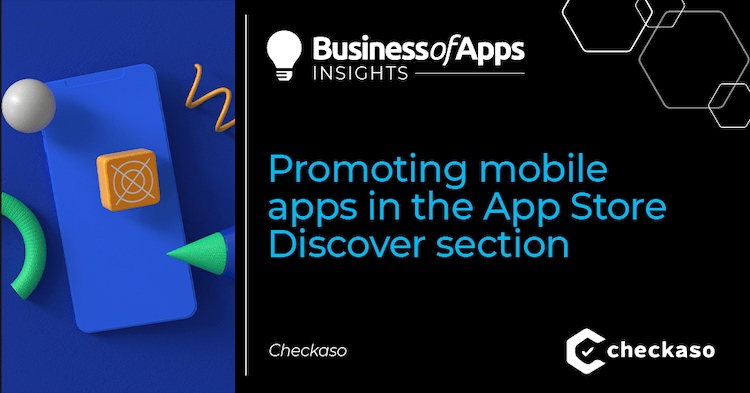
In this post, we’ll share the results of our research on the App Store algorithm, discuss the difference between the Trending and Discover sections, and hunt for high traffic.
Mythbusters
According to statistics, on the App Store 65% of installs come from search results. Looking at these numbers, is it necessary to say how important organic traffic is for mobile app growth?
To understand how the App Store recommendation algorithm operates, let’s first look at how the App Store search works in general.
You can search for apps in the Search tab (the rightmost of the five buttons below) on the App Store. Technically, this section can be divided into three subsections:
- A “Search” bar;
- “Discover” word list;
- “Suggested” apps.
The “Trending Searches” section (hereafter Trending) with a list of search queries is in this tab too. It appeared with the release of iOS 8 back in 2014 and still exists in versions up to iOS 13.
With the launch of the Discover section, many users have decided that the section is a “direct heir” to Trending with a new name. However, this is not the case, because both sections exist independently of each other.
Trending and Discover: what are the similarities and differences?
What is “Trending”?
“Trending” (Popular) includes search queries that are gaining popularity. Most often these queries are brand names of popular apps, that is, they match one app on the App store.
The rating is updated regularly, like all the results on the App Store, but it does not change dramatically, only partially and gradually. The algorithm for creating the Trending list is quite simple: it includes those search queries for which the number of impressions has increased the most recently. You can manipulate this list, for example, to display the necessary keyword, using a large amount of traffic.
What is “Discover”?
“Discover”(Current), as we said, is not a part of Trending, but another list of popular keywords.
📊 Mobile Games Index 2024: Current Engagement Trends Are In
Learn what experiences mobile gamers are ready to pay for with their time and money right now. Explore MGI 2024 for the latest engagement trends and top charts.
Read the reportThe Discover and Trending collections exist separately from each other. The most obvious difference between them is that Discover consists not of non-branded keywords: video editor, dating, pdf.
It sounds like a potentially attractive area for business because it’s not just the keywords related to giant apps that fall into this section. But are there pitfalls here?
Discover updates completely 3-6 times a day. The queries differ by country, but the queries in the section are the same for iPhones and iPads within the same region. With the iPhone, the first four queries are available, and with the iPad — all six. There is no personalization.
The image below shows screenshots of the Search screen on the App Store, taken at the same time from different devices. You can see Trending on the left and Discover on the right.
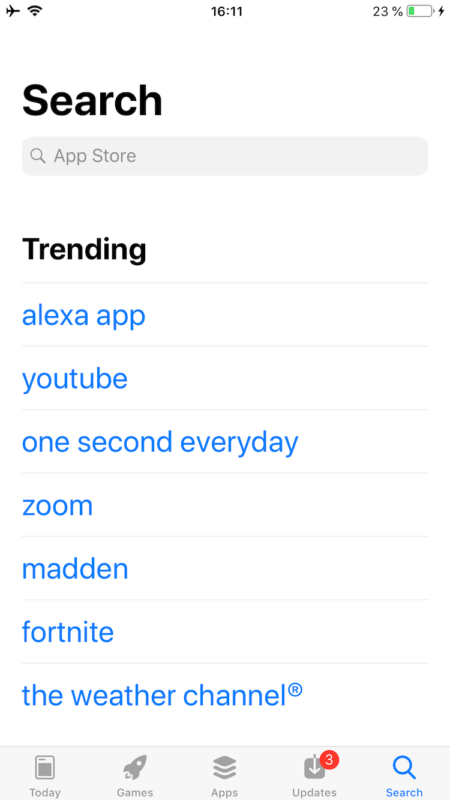 | 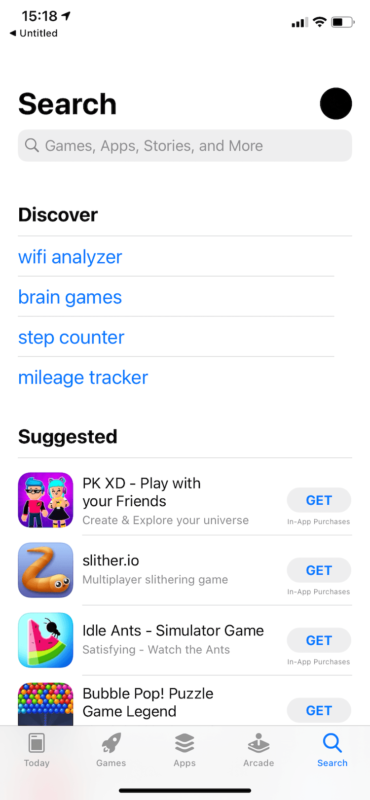 |
Why did we research the Discover algorithm?
The main goal of the study was to examine the App Store algorithm and analyze how getting a keyword into the Discover section affects traffic. Besides that, we studied the possibilities of manipulation to use this section for solving business problems.
We have already explained the difference between the Trending and Discovery sections, it’s time to talk about our approach to research.
What questions have we studied:
- What queries make up the Discover collection, and their characteristics;
- How the App Store algorithm works to form Discover;
- How much does getting a keyword into this collection affect its popularity;
- Whether the contents of this collection can be manipulated.
Work plan:
- Collect a representative sample of Discover queries;
- Analyze the queries contained in the sample;
- Correlate the dates these queries were found in the Discover collection with their Search Ads Popularity historical data.
The Discover Study: Practice
Step 1: We’ve collected all of Discover’s iPhone collections updates (4 requests per list) for the last 2 months (June and July 2021) across the U.S.
Step 2. An initial visual analysis of this sample showed that queries are often repetitive. Although the entire Discover query list is completely updated 3-6 times a day, queries are repeated in the lists several times on different days, but without a strict cyclic pattern. The same keyword can get into the section for several days in a row, but then drop out for a week.
It looks chaotic enough to ride this wave.
Further study showed that there were only 152 unique queries in June, 149 in July, and 156 in the entire sample.
Bottom line: the Discover collection is generated by a limited number of keywords that remain almost unchanged for the most part.
The sample does not really contain branded queries, only general ones. This means that the App Store has an algorithm that determines brand-related words. You won’t find, say, Tinder on Discover, only “dating’’.
Why does the algorithm exclude branded keywords?
Our research suggests that the algorithm may aim to provide users with ideas for finding new and engaging apps to install, rather than just keywords to specific apps.
40% of the total sample consists of keywords related to games, the rest — to photo and video editors, entertainment apps, various utilities, etc. Their Search Ads Popularity is between 40 and 70. The most common queries are the ones that are first on the App Store autocomplete list after the first word is entered.
The popularity of keywords in Discover, made with Checkaso
How this list may be created: Hypotheses
Maybe the queries we got were just the most popular keywords?
To test this idea, we unloaded a list of the most popular searches in the U.S. on July 1. Let’s take a look at the top 30 non-branded keywords:
As we can see, Discover’s list of queries overlaps with the list of the most popular queries, but does not repeat it entirely.
Maybe Discover’s logic is the same as for Trending, but with the exclusion of branded keywords. In other words, it is a ranking of non-branded keywords, which have grown in popularity lately. The App Store wants users to be able to explore and try different things in harmony.
As the logic of the Discover collection becomes clearer, the possibility of any manipulation of it is reduced to zero. Traffic or any specific optimization will not help your app.
Step 3. Naturally, having a query in such a highly visible collection should have a positive effect on its Search Ads Popularity metric.
Clearly, there are many factors that affect keyword frequency, whether it’s seasonality, usual weekends, advertising campaigns, etc. Perfectly, to determine the correlation between getting into Discover and increasing popularity, the data sample should be cleared of the influence of all other factors, but this is not possible.
Below you can see screenshots from Checkaso with the daily Search Volume History of keywords (Analysis section), where we marked the days of their presence in the Discover collection with red lines.
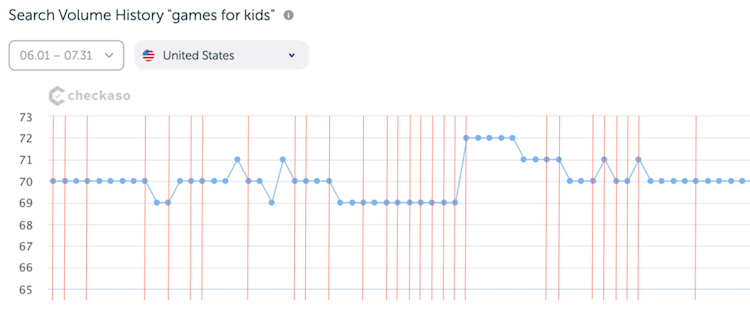 |
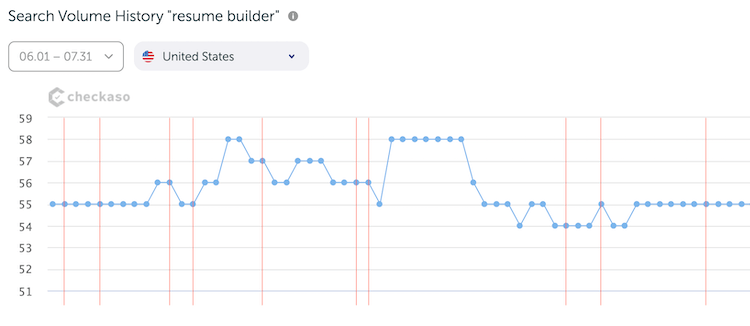 |
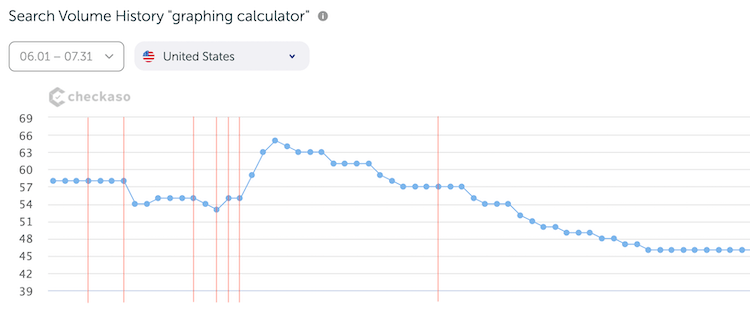 |
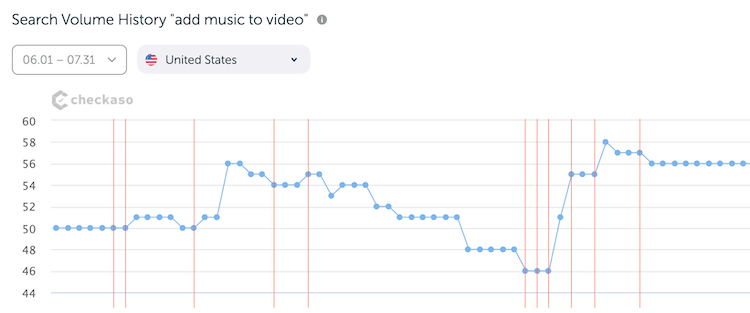 |
As a result, we can see that there is a correlation between getting into the Discover collection and the following growth of SAP:
- If a keyword has been in Discover for 2-3 days straight, it shows an increase in frequency.
- After a keyword is no longer shown in the collection, its frequency decreases.
- The higher the frequency of the keyword, the more often it is included in the collection, but less its growth and fluctuations.
It is important to understand that finding these queries in Discover is a consequence of their popularity, not a cause. The keywords are already very popular, that’s why they end up in this collection, which only gives them more visibility.
In business terms, this means that if you optimize your app, work on product improvements, and interact with your audience, your app will occasionally be able to get additional traffic from the section, but you can’t control those ‘boosts’.
Confirmation and results of the research
We got useful information about how the App Store algorithms work and the Discover section in particular. The study has not only an important theoretical aspect, but it is also applicable to mobile marketing.
Sometimes in practice there are cases with a sudden increase in traffic (impressions and installs) on a single day. At the same time, keyword analysis reveals no dramatic changes in the ranking or indexing of the app. One suggestion was that the popularity of indexed keywords might have increased. For example, a relevant keyword could get into the Discover collection.
Now we have more information about Discover, so the hypothesis can be tested.
Discover mostly consists of popular keywords. If the app ranks in the top 1-10 for popular keywords, it already steadily gets an influx of traffic from the organic App Store search. Thus, the increase in traffic from Discover should not be prominent in the overall volume.
Our research has shown that queries are getting into Discover in cycles, so a one-time and sudden leap in traffic is unlikely.
Conclusion
Do search optimization of the app and seek to achieve leading positions. This will guarantee you a steady influx of organic installs even from those sections that you can’t directly impact.
Try out Checkaso tools — get a free 7-day trial.




